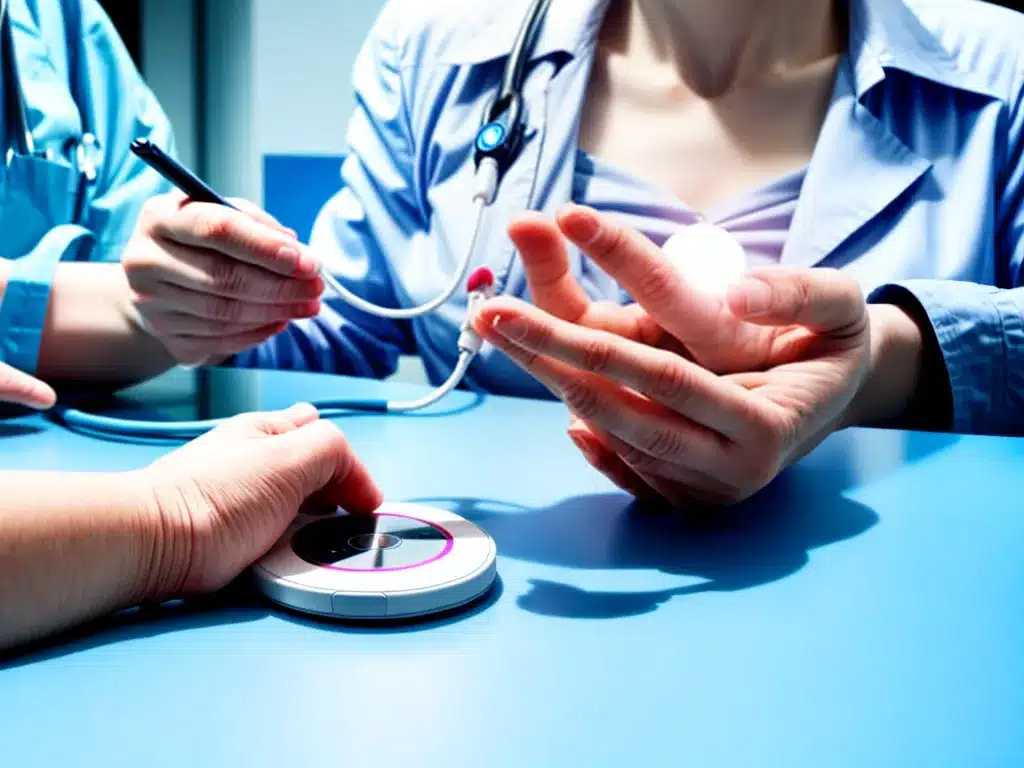
Can IoT Help the NHS? 5 Potential Applications
Introduction
The Internet of Things (IoT) refers to the network of internet-connected objects that can collect and share data. IoT is becoming increasingly prevalent in healthcare, with analysts predicting the global IoT healthcare market will reach $534.3 billion by 2025. As the largest publicly funded healthcare system in the UK, the National Health Service (NHS) has huge potential to benefit from IoT innovation. In this article, I explore 5 key areas where IoT could support the NHS to improve patient care, streamline operations, and reduce costs.
Remote Patient Monitoring
IoT-enabled remote patient monitoring allows healthcare providers to track a patient’s vital signs and symptoms outside of the hospital or clinic. Patients can use wearable devices and sensors at home to monitor conditions like blood pressure, blood glucose levels, heart rate, oxygen saturation, respiratory rate, etc. The data is wirelessly transmitted to healthcare providers to assess the patient’s status.
Remote monitoring can reduce hospital admissions and readmissions, improve outcomes, and lower costs for managing chronic illnesses like diabetes, COPD, congestive heart failure and hypertension. It also enables earlier intervention for deteriorating conditions, avoiding complications and emergency room visits.
The NHS has piloted remote monitoring programs, including initiatives where chronic disease patients wore smart watches to track their health data. Broader implementation of remote monitoring IoT solutions across the NHS could support improved preventive care.
Asset Tracking and Management
Hospitals contain expensive medical equipment like MRI machines, beds, and ultrasound scanners that need regular maintenance and monitoring. IoT asset tracking solutions allow hospitals to attach internet-connected sensors to these high-value assets. This provides real-time visibility into the location and status of each item.
Benefits of IoT asset tracking for NHS hospitals include:
- Reduced equipment loss – instantly locate missing assets
- Improved maintenance – flag devices due for servicing
- Optimized equipment usage – analyze usage patterns to redistribute idle resources
- Streamlined workflows – quickly find available assets like wheelchairs and IV pumps
Studies show IoT asset management systems can reduce capital spending by up to 20% in hospitals. Implementing these solutions across NHS hospitals could significantly improve operations and cut costs.
Digital Wayfinding
Navigating large and complex hospital environments can be challenging for patients and visitors. IoT wayfinding solutions can assist with navigation through features like:
- Indoor mapping – turn-by-turn navigation shows users the optimum route to their destination.
- Location tracking – staff and patients can be located in real-time throughout the hospital.
- Interactive kiosks – touchscreen kiosks provide information on directions, departments, wait-times, etc.
IoT-enabled wayfinding aims to improve the overall hospital experience and satisfaction. Studies show it can reduce missed appointments due to getting lost, lower staff time spent providing directions, and decrease patient stress.
For a complex organization like the NHS with thousands of facilities, better navigation could improve efficiency and outcomes across the system.
Inventory and Supply Chain Management
IoT solutions can also optimize NHS inventory and supply chain management. Attaching sensors to medical supplies and equipment allows hospitals to track stock in real-time. This improves visibility into current inventory levels and upcoming needs.
Other potential benefits include:
- Reduce overstocking – optimize just-in-time deliveries based on real-time usage data.
- Prevent stockouts – proactively reorder supplies before they run out.
- Monitor conditions – ensure temperature-sensitive supplies remain in proper conditions.
Overall, IoT can help NHS hospitals cut supply chain waste, reduce costs, and improve availability of needed medical supplies.
Predictive Maintenance of Facilities
NHS hospitals contain complex machinery like HVAC systems, backup generators, and elevator banks that require ongoing maintenance. Sensor-enabled IoT solutions can monitor the performance and health of this equipment.
Predictive maintenance uses IoT data analytics to identify parts likely to fail so they can be proactively repaired or replaced. This avoids equipment downtime and catastrophic failures. Predictive maintenance can:
- Improve reliability – reduce breakdowns of vital systems.
- Optimize spending – target repairs where needed instead of routine servicing.
- Enhance operations – minimize disruptions to hospital operations.
IoT-driven predictive maintenance can limit expensive hospital downtime and improve NHS facilities management.
Conclusion
In summary, IoT has tremendous potential to address pressing challenges faced by the NHS across operations, patient care, and spending. While upfront investment is required, deploying IoT solutions like remote patient monitoring, asset tracking, wayfinding tools, and predictive maintenance can ultimately save the NHS considerable time and money. With its scale and data sophistication, the NHS is well-positioned to leverage IoT and become a model for technology-driven healthcare innovation.












